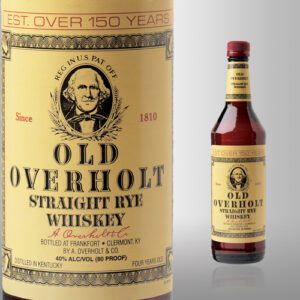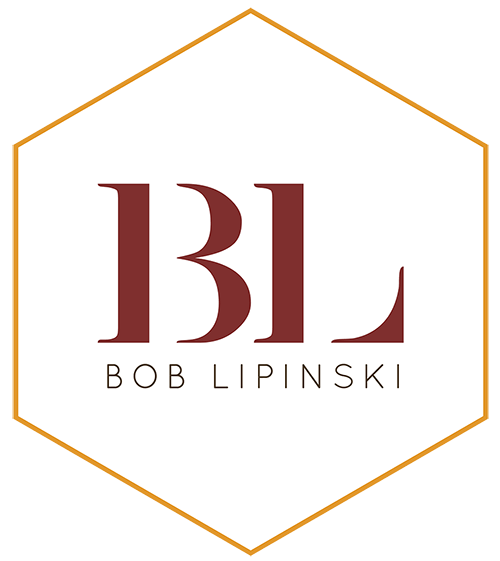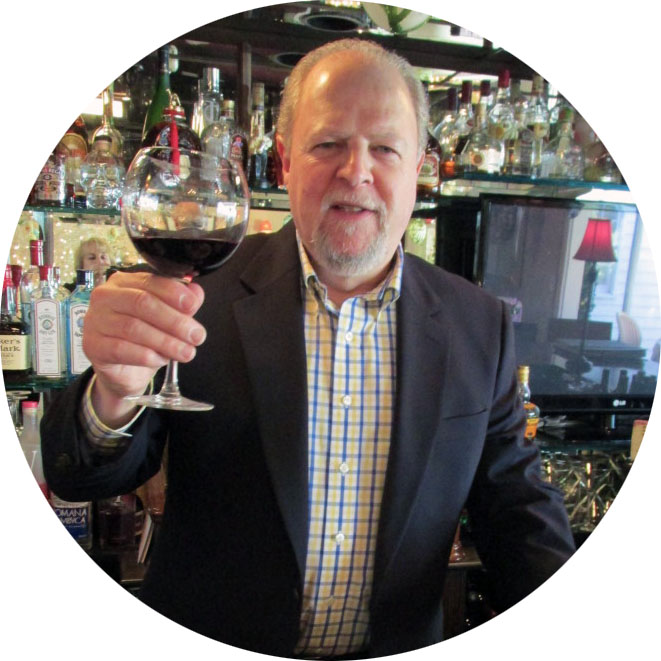By Bob Lipinski
“I wish to live to 150 years old, but the day I die, I wish it to be with a cigarette in one hand and a glass of whiskey in the other.” (Ava Gardner, 1922-1990, American actress)
Rye, an American whiskey, was the favorite of President George Washington. In 1797, Washington constructed a large whiskey distillery next to his gristmill on the banks of Dogue Creek in Fairfax County, Virginia. The enterprise became the most successful whiskey distillery in early America, producing 11,000 gallons of rye whiskey in 1799, worth the then-substantial sum of $7,500. James Anderson, a Scotsman, supervised the distillery.
Though early whiskey history is vague, the first distillers were said to be German, Irish, and Scottish immigrant farmers, who made whiskey from rye. Rye whiskey was first distilled in 1648 by Emmanuel Downing in Salem, Massachusetts. After the Whiskey Rebellion (1794), many of these farmers moved to the frontiers of Tennessee and Kentucky and began to make whiskey from corn. When the farmers began to combine corn with local iron-free limestone filtered water, the bourbon whiskey industry was born and became the whiskey of choice for Middle America. Rye, along with bourbon whiskey, was affected by Prohibition. This was followed by soldiers returning from World War II who had developed a taste for the lighter Irish and Scotch whiskies. Production of rye whiskey had almost vanished altogether from its Mid-Atlantic homeland by the 1980s. Many “modern-style” rye whiskies are being made by bourbon and other distilleries throughout the United States, mostly in Kentucky.
Federal regulations require that rye whiskey be made from a grain mixture of a minimum of 51 percent rye (there is no upper limit); however, 65 to 75 percent is generally used. The higher the rye content and lower the percentage of other grains, the lighter the whiskey. Although technically rye whiskey can contain 100 percent rye, few distillers exceed 90 percent. The blend of other grains is dictated by the distiller’s own private formula; corn, barley, oats, and wheat can be used. Rye, other than “Straight Rye” whiskey may contain coloring, flavoring, or other ingredients up to 2.5 percent.

Rye Grain
Rye whiskey is distilled twice at no higher than 160-proof. It must be aged in new, charred oak barrels (as of 1938) ranging in capacity from 50 to 66 gallons, at not more than 125-proof (as of 1962). There is no minimum amount of aging for non-Straight “Rye Whiskey” and technically a distiller could pump the clear distillate into a new charred oak barrel and then immediately empty it. It would legally meet federal requirements although the product would be inferior in quality and taste. Even if the whiskey is legally ‘straight’ there is no requirement to use the term on the label; it is optional.
According to U.S. federal regulations, rye doesn’t have to be aged in American or white American oak barrels. It must be aged in new, charred oak barrels. So, rye can be aged in French oak (Allier, Limousin, Nevers, Tronçais), Brazilian, Hungarian, Irish, Spanish, or even Japanese Mizunara oak providing the barrel is new and charred.
“Straight Rye Whiskey” must adhere to the basic rye whiskey rules regarding grain blend, distillation proof, and storage proof in new, charred oak barrels. In addition, “Straight Rye Whiskey” must be aged a minimum of two years. Although most distillers age their rye anywhere from four to 10 years, if it is released before the fourth year of aging, it must be stated on the label. In addition, no alcohol, caramel coloring, or flavoring can be added. However, a “straight whiskey” may contain coloring or flavoring providing a modifier is added. For example, Distillery ABC produces a “Kentucky Straight Rye Whiskey Infused With Natural Flavors.” Distilled water may be added to the rye before bottling to achieve the proper bottling proof, which must be at least 80-proof, however, many are bottled above 100-proof.
Rye whiskey that is labeled blended (or as a blend) may contain added coloring, flavoring, and other spirits (such as un-aged neutral grain spirits); but at least 51 percent of the product must be straight rye.
Rye whiskey can be produced anywhere in the United States (and its territories, which include Puerto Rico, Guam, and the U.S. Virgin Islands), although most is made in Kentucky and Indiana. Rye whiskey is produced in all 50 states. Rye whiskey is also made in Australia, Canada, Denmark, Finland, Germany, India, Ireland, Japan, Netherlands, Poland, Russia, Scotland, Sweden, Ukraine, the United Kingdom, and other countries.
During the 1950s and 1960s, when ordering a Highball or Presbyterian cocktail at a bar, people incorrectly referred to Seagram’s 7-Crown, Canadian Club Whisky, and Seagram’s V.O. as “rye whiskey.” Rye is an ingredient of Canadian whisky and American-made Blended whiskey, but during that era, it never reached a minimum of 51 percent to be labeled “rye whiskey.”

Old Overholt Rye Whiskey
“Work hard, stand fast, and don’t waver.” (Abraham Overholt, 1784-1870)
Some brands of “American” Rye Whiskey are Bulleit, Classic Cask, Elijah Craig, George Dickel, George Washington’s, High West, Hirsch, Hudson Manhattan Rye, Jim Beam, Knob Creek, Michter’s, Old Forester, Old Overholt, Old Potrero, Redemption, Rittenhouse, Russell’s Reserve, Sagamore, Sazerac, Southern Star, Templeton, Thomas H. Handy, Van Winkle Family Reserve, Wild Turkey, Willett, and Woodford Reserve.
Rye Whiskey has flavors of caramel, dried fruit, ginger, spices, pepper, toffee, slight bitterness (rye bread). Rye Whiskey has hints of cinnamon, cloves, damp earth, grass, herbs, nutmeg, and vanilla.
Some recommended cocktails using rye whiskey are a Manhattan, Whiskey & Club Soda, High Ball, Presbyterian, Sours, Old Fashioned, and the Sazerac.
“Tell me what brand of whiskey that Grant drinks. I would like to send a barrel of it to my other generals.” (Abraham Lincoln, 1809-1865, American president)
Bob Lipinski is the author of 10 books, including “101: Everything You Need To Know About Whiskey” and “Italian Wine & Cheese Made Simple” (available on Amazon.com). He conducts training seminars on Wine, Spirits, and Food and is available for speaking engagements. He can be reached at www.boblipinski.com OR bkjm@hotmail.com


 Bob Lipinski, author of 10 books; writes, consults, and conducts training seminars on Wine, Spirits, and Food and is available for speaking engagements.
Bob Lipinski, author of 10 books; writes, consults, and conducts training seminars on Wine, Spirits, and Food and is available for speaking engagements.
Recent Comments